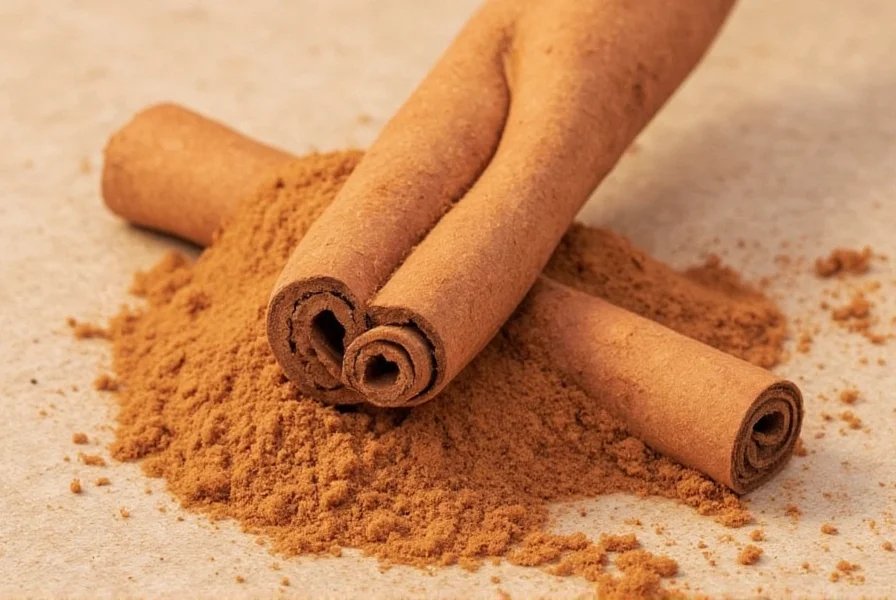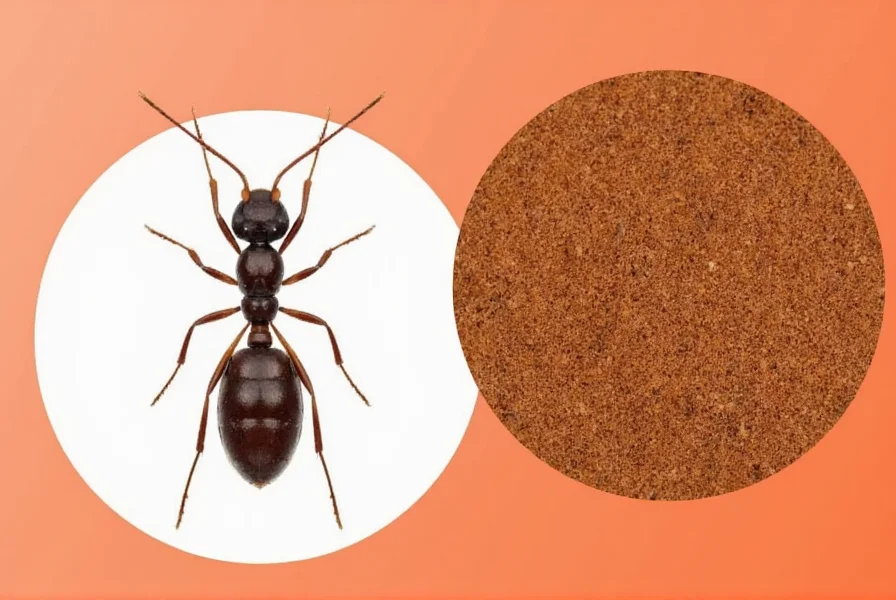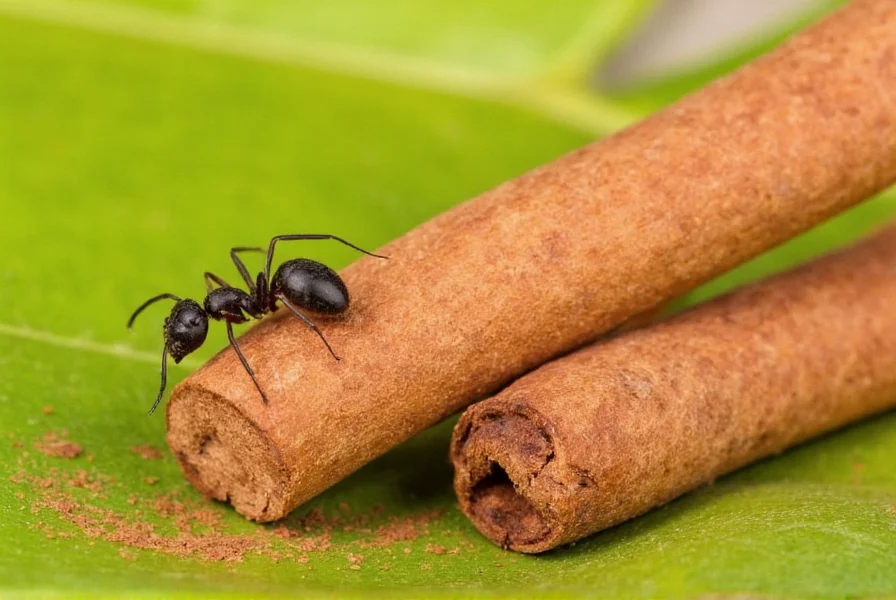Homeowners seeking natural pest control solutions often wonder: can cinnamon kill ants? The science-backed answer reveals cinnamon's true effectiveness against these common invaders. Unlike chemical pesticides, cinnamon offers a non-toxic approach that leverages ants' biological vulnerabilities without posing risks to children or pets.
Cinnamon's primary active component, cinnamaldehyde, interferes with ants' ability to follow pheromone trails—the chemical pathways they use for navigation and communication. When ants encounter cinnamon powder or oil, their sensory receptors become overwhelmed, causing confusion and preventing them from locating food sources or returning to their colony. This natural disruption makes cinnamon an excellent repellent but falls short as a reliable killing agent.
How Cinnamon Affects Ant Behavior
Ants rely heavily on chemical signals to coordinate colony activities. Cinnamon's essential oils create what researchers call a "chemical barrier" that:
- Disrupts trail-following behavior within seconds of contact
- Causes temporary paralysis in high concentrations
- Triggers avoidance responses that last 24-48 hours
- Interferes with antennae function, impairing communication
While some online sources claim cinnamon kills ants through suffocation by blocking spiracles (breathing pores), entomologists note this requires impractical concentrations unlikely to occur in home applications. The University of California's Statewide Integrated Pest Management Program confirms cinnamon's value as a repellent but doesn't recommend it as a standalone elimination method for established colonies.
| Cinnamon Type | Repellent Effectiveness | Killing Potential | Duration of Effect |
|---|---|---|---|
| Ground Ceylon Cinnamon | ★★★★☆ | ★☆☆☆☆ | 24-36 hours |
| Cinnamon Essential Oil | ★★★★★ | ★★☆☆☆ | 48-72 hours |
| Cinnamon Stick Infusion | ★★★☆☆ | ★☆☆☆☆ | 12-24 hours |
Effective Application Methods for Ant Control
For homeowners seeking natural ant control solutions, proper cinnamon application makes all the difference. Research from the Journal of Economic Entomology suggests these evidence-based techniques:
- Dry barrier method: Create continuous lines of ground cinnamon (1/4 inch thick) at entry points. Reapply after cleaning or moisture exposure.
- Essential oil spray: Mix 15 drops cinnamon oil with 1 cup water in a spray bottle. Apply to ant trails and potential entry points.
- Boiled solution: Simmer 2 tablespoons ground cinnamon in 2 cups water for 20 minutes, then strain and apply cooled solution to problem areas.
These methods work best when combined with sanitation practices like sealing food containers and eliminating moisture sources. Remember that cinnamon's effectiveness diminishes when wet, so avoid applying it in damp areas like bathrooms or near sinks.
Limitations of Cinnamon for Ant Control
While cinnamon offers a safe, natural option for ant management, understanding its limitations prevents wasted effort. Entomological studies reveal several important constraints:
- Doesn't eliminate established colonies hidden in walls or foundations
- Requires frequent reapplication (every 1-3 days) for continued effectiveness
- Less effective against aggressive species like fire ants or carpenter ants
- Won't work if alternative pathways exist around the cinnamon barrier
- Temporary solution that doesn't address the root cause of infestations
For severe infestations, integrated pest management approaches combining multiple natural methods yield better results than relying solely on cinnamon. The National Pesticide Information Center recommends using cinnamon as part of a comprehensive strategy rather than a standalone solution.
Beyond Cinnamon: Complementary Natural Ant Control Methods
Maximize your natural pest control efforts by combining cinnamon with these scientifically supported methods:
- Vinegar solutions: 50/50 white vinegar and water disrupts pheromone trails more effectively than cinnamon alone
- Diatomaceous earth: Food-grade DE creates lethal barriers that physically damage ants' exoskeletons
- Peppermint oil: Complements cinnamon by targeting different sensory receptors
- Sealing entry points: Permanent solution using caulk to block access points larger than 1/16 inch
A 2022 study published in the Journal of Pest Science found that combining cinnamon with vinegar reduced ant activity by 78% compared to 52% for cinnamon alone. This synergistic approach addresses both trail disruption and repellency while minimizing chemical exposure.

When to Seek Professional Pest Control
Natural methods like cinnamon work well for minor ant problems, but certain situations require professional intervention:
- Visible ant nests inside wall voids or structural components
- Persistent infestations lasting more than 2 weeks despite treatment
- Bites or stings from aggressive ant species
- Ants contaminating food preparation areas despite sanitation efforts
- Carpenter ants causing structural damage (identified by wood shavings)
Professional pest controllers can identify colony locations and apply targeted treatments that natural repellents cannot reach. The Entomological Society of America emphasizes that early professional intervention prevents minor ant problems from becoming major infestations.
Safety Considerations for Home Use
Cinnamon's natural origin doesn't mean it's completely risk-free. Consider these safety points:
- Cinnamon essential oil can irritate skin and eyes—always dilute before use
- Ground cinnamon creates airborne particles that may trigger asthma in sensitive individuals
- Keep cinnamon away from pets' eating areas as it may cause digestive upset
- Never use cinnamon near electrical outlets where powder could create fire hazards
- Test solutions on inconspicuous surfaces first to prevent staining
Unlike chemical pesticides, cinnamon breaks down quickly in the environment and doesn't leave toxic residues. This makes it particularly suitable for households with children, pets, or individuals with chemical sensitivities.

Conclusion: Cinnamon's Role in Natural Pest Management
Can cinnamon kill ants? Scientific evidence confirms it primarily repels rather than kills, making it valuable for prevention but insufficient for elimination. Understanding this distinction helps homeowners set realistic expectations for natural pest control. When used correctly as part of an integrated approach, cinnamon provides a safe, effective first line of defense against ant invasions without introducing harmful chemicals into living spaces.
For best results, combine cinnamon barriers with improved sanitation, entry point sealing, and complementary natural repellents. This multi-pronged strategy addresses both immediate ant activity and underlying conditions that attract them, creating a more ant-resistant home environment.
Does cinnamon actually kill ants or just repel them?
Cinnamon primarily repels ants rather than kills them. The essential oils disrupt ants' pheromone trails and sensory functions, causing avoidance behavior. While extremely high concentrations might suffocate some ants by blocking their breathing pores, this isn't a reliable killing method in practical home applications.
How long does cinnamon last as an ant repellent?
Ground cinnamon typically remains effective for 24-36 hours before needing reapplication. Cinnamon essential oil solutions last longer—48-72 hours—due to higher concentration of active compounds. Effectiveness diminishes when exposed to moisture, foot traffic, or cleaning activities, requiring more frequent application in high-traffic areas.
What's the most effective way to use cinnamon against ants?
The most effective method combines ground cinnamon barriers at entry points with a cinnamon oil spray (15 drops per cup of water) along ant trails. Create continuous lines at least 1/4 inch thick, and reapply after cleaning or moisture exposure. For best results, use this as part of an integrated approach that includes sealing entry points and eliminating food sources.
Can cinnamon eliminate an entire ant colony?
No, cinnamon cannot eliminate established ant colonies. It works as a surface-level repellent that affects foraging ants but doesn't reach hidden nests inside walls or foundations. For complete colony elimination, professional pest control methods targeting the nest directly are necessary, as cinnamon only creates temporary barriers that ants eventually navigate around.
Is cinnamon safe to use around pets and children?
Cinnamon is generally safe around pets and children when used appropriately. However, cinnamon essential oil should be diluted and kept away from pet food areas, as it may cause digestive upset if ingested. Ground cinnamon can become airborne and potentially irritate respiratory systems, so avoid heavy application in areas where children or pets frequently play. Unlike chemical pesticides, cinnamon doesn't leave toxic residues.











 浙公网安备
33010002000092号
浙公网安备
33010002000092号 浙B2-20120091-4
浙B2-20120091-4